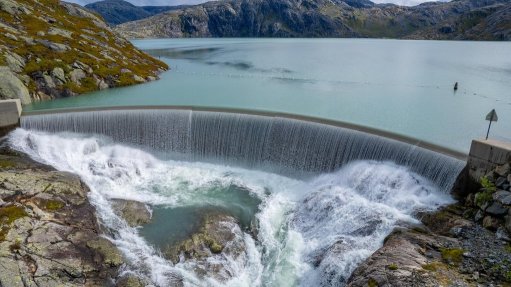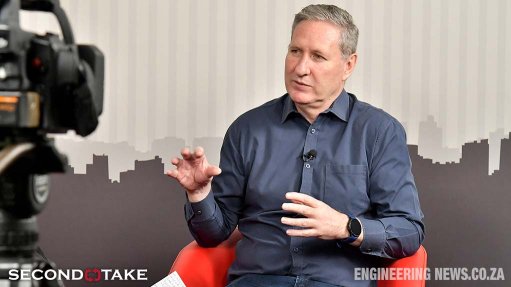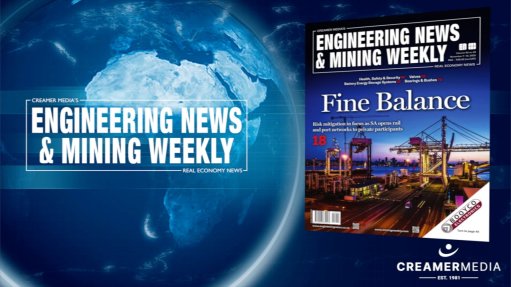Reinventing data centre design: critical changes to meet surging demand
This article has been supplied.
By: Faith Waithaka - Cloud and Service Provider Segment Sales Lead: Anglophone Africa at Schneider Electric
AI technologies are pushing the boundaries of what is possible which, in turn, is presenting data centres with a whole new set of challenges. Enterprises, colocation providers, and tech giants are now scrambling to rethink their data centre strategies.
Indeed, how can an industry undergoing such transformation, also shift gears at full speed? Fortunately, as data centres research, plan, and implement change, several options are emerging which include optimising design and infrastructure for efficiency, cooling as well as management systems.
Rising energy demand
AI is increasingly vital in streamlining tech-driven tasks, but its well-known that the energy trade-off is immense. The Electric Power Research Institute reports that a typical AI query consumes ten times the electricity of a traditional internet search, with AI-generated music, photos, and videos demanding even more power.
With 5.45 billion Internet Users, AI adoption is driving power consumption to unprecedented levels. AI’s computing capacity is expected to double every 100 days, increasing global energy consumption linked to AI by 26% to 36% annually.
This extreme demand necessitates innovation which has seen data centre executives working hard to adjust and modify strategies and identify solutions to improve efficiency while maintaining reliability.
Data centres for the future
The rise of AI compels data centres to upgrade rack configurations, cooling systems, software management, and power optimisation technologies:
Rack configuration
AI workloads require thoughtful space planning to accommodate advanced cooling systems and increased infrastructure footprints.
Here, large AI training models are driving a shift towards higher rack power densities. High-density racks house more servers in a smaller area, enhancing computing power without increasing space.
Modular rack systems enable scalability, allowing rapid adaptation to evolving AI power requirements without costly overhauls. However, as computing demands rise, traditional cooling methods struggle to maintain optimal temperatures.
Integration of liquid cooling
AI-driven hardware generates significant heat, necessitating more efficient cooling systems. Traditional air cooling often fails to manage these thermal demands effectively
Liquid cooling offers a viable alternative, improving thermal management and extending equipment lifespan. Hybrid cooling solutions that combine air and liquid cooling are also gaining traction, ensuring flexibility and performance optimisation.
Flexible power distribution
Higher-density workloads require more robust power distribution. Data centres are adopting advanced uninterruptible power supplies (UPS) and scalable power solutions for reliable energy delivery.
Racks are being equipped with power distribution units (PDUs) that handle higher wattages and allow dynamic power allocation. Collaboration with utility companies is also increasing, helping data centres implement demand response programmes and leverage renewable energy options.
Leveraging waste heat
As data centres expand to support AI, they are also repurposing waste heat to improve efficiency. Waste heat can be used to warm nearby buildings, such as homes, offices, and public spaces. Examples include:
- Google’s data centre in Hamina, Finland, which supplies excess heat to a nearby paper mill, improving efficiency.
- Equinix’s Paris data centre, which directs waste heat to warm the Olympic swimming pools at the Paris Olympic Aquatic Centre.
- Multiple data centres are implementing initiatives to make use of excess heat for indoor agriculture or greenhouses that require warm air to grow crops in a wide variety of areas.
Rising above the AI surge
As AI adoption accelerates, data centres must remain agile. Strategic changes in facility design, power efficiency, cooling systems, and management practices are essential to maintaining peak performance.
Every data centre operator must ask, “Is our infrastructure future-ready?” Before implementing major changes, a thorough evaluation of existing infrastructure, tools, and processes is necessary to identify key areas for improvement. High-impact zones should be prioritised to maximise efficiency gains.
Investing in scalable, future-proof solutions ensures long-term adaptability. Engaging stakeholders and industry experts early in the process helps align strategies with business objectives.
Article Enquiry
Email Article
Save Article
Feedback
To advertise email advertising@creamermedia.co.za or click here
Comments
Press Office
Announcements
What's On
Subscribe to improve your user experience...
Option 1 (equivalent of R125 a month):
Receive a weekly copy of Creamer Media's Engineering News & Mining Weekly magazine
(print copy for those in South Africa and e-magazine for those outside of South Africa)
Receive daily email newsletters
Access to full search results
Access archive of magazine back copies
Access to Projects in Progress
Access to ONE Research Report of your choice in PDF format
Option 2 (equivalent of R375 a month):
All benefits from Option 1
PLUS
Access to Creamer Media's Research Channel Africa for ALL Research Reports, in PDF format, on various industrial and mining sectors
including Electricity; Water; Energy Transition; Hydrogen; Roads, Rail and Ports; Coal; Gold; Platinum; Battery Metals; etc.
Already a subscriber?
Forgotten your password?
Receive weekly copy of Creamer Media's Engineering News & Mining Weekly magazine (print copy for those in South Africa and e-magazine for those outside of South Africa)
➕
Recieve daily email newsletters
➕
Access to full search results
➕
Access archive of magazine back copies
➕
Access to Projects in Progress
➕
Access to ONE Research Report of your choice in PDF format
RESEARCH CHANNEL AFRICA
R4500 (equivalent of R375 a month)
SUBSCRIBEAll benefits from Option 1
➕
Access to Creamer Media's Research Channel Africa for ALL Research Reports on various industrial and mining sectors, in PDF format, including on:
Electricity
➕
Water
➕
Energy Transition
➕
Hydrogen
➕
Roads, Rail and Ports
➕
Coal
➕
Gold
➕
Platinum
➕
Battery Metals
➕
etc.
Receive all benefits from Option 1 or Option 2 delivered to numerous people at your company
➕
Multiple User names and Passwords for simultaneous log-ins
➕
Intranet integration access to all in your organisation



















